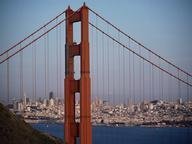Quiz Answer Key and Fun Facts
1. Estanislao, a member of the Yokut tribe, was branded a outlaw by the Spanish for what crime?
2. When Spanish forces were sent to capture Estanislao which was not a method that he employed in defense of himself and his supporters?
3. Estanislao's rebellion ended with him being captured and executed.
4. In order to control the natives and discourage other European imperial rivals the Spanish established a strong military presence in some places called "presidios". Initially they were established in three strategic locations. Which of these was *not* one of the original locations?
5. Junipero Serra is considered the father of the Spanish mission system in California, but that was not his given name. What was the first name he had from birth until he was ordained?
6. Attacks by what tribe on the missions of San Pedro and Purisima Concepción in 1780 closed the major route for new immigration into California?
7. Although the Spanish were the first to land and establish settlements in California there was another imperial power which also had a possible claim to at least some of California. Sir Francis Drake landed and christened an area Nova Albion. When he departed he supposedly left a plate behind with an inscription commemorating this discovery. In which place in modern California did he supposedly land?
8. In what year did the Mexico (and thus also California) formally secede from Spanish rule?
9. What was the primary contribution of the missions to the economy of California?
10. Richard Henry Dana Jr. wrote a book about his experiences aboard the ship Pilgrim and its voyages to California. What is the name of this book which is considered California's first great literary masterpiece?
11. What was the name of the Russian fort set up in 1812 as a supply post for Alaskan fur-trading posts?
12. Rachel Hobson Holmes holds what distinction in Californian history?
13. Who was the mountain man and fur trapper who first crossed the Sierra Nevadas and blazed a trail between Oregon and California?
14. The ill-fated Donner party is one of the more depressingly morbid stories of California's early history. The only good part about it was that there were some survivors. How many were eventually rescued and made it to California?
15. On January 13, 1848 Andres Pico officially surrendered to John Fremont, thus ending Mexican control over California. This was known as the what?
Source: Author
darthdragon
This quiz was reviewed by FunTrivia editor
bloomsby before going online.
Any errors found in FunTrivia content are routinely corrected through our feedback system.
